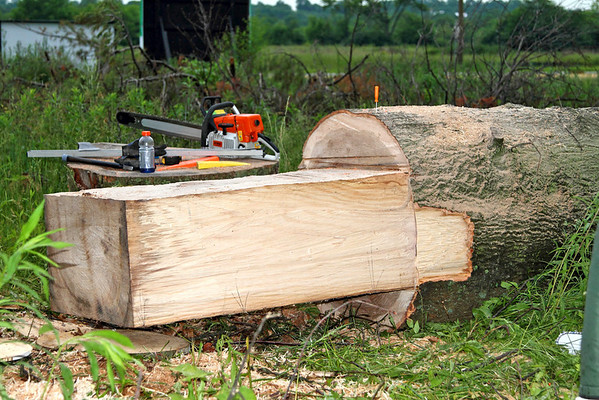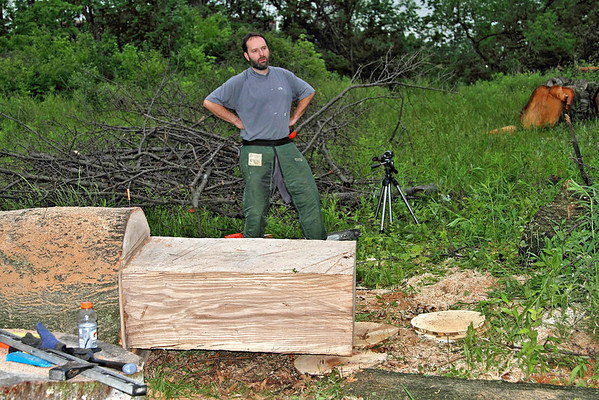FATGUY
Addicted to ArboristSite
- Joined
- Jun 2, 2008
- Messages
- 6,535
- Reaction score
- 1,547
I don't mean to hijack this thread, I just look down and see so many knowledgeable members here....

OK, so here's another couple I'm going to lob out there. Why does it take X number of "pulls" to get the compression on a saw? Surely the volume of the hose can't be responsible for it, can it?
OK, so here's another couple I'm going to lob out there. Why does it take X number of "pulls" to get the compression on a saw? Surely the volume of the hose can't be responsible for it, can it? Secondly, has anyone ever figured out if either compression or compression ratio can mathematicaly be derived from one another?
I don't mean to hijack this thread, I just look down and see so many knowledgeable members here....

Dang! The answers are flying quickly! It's an AS intervention for someone falling off the 4-stroke wagon!
Nik, fill a couple of coolers full of beer, put 'em in your truck, and I'll do the same. If we leave at the same time, I'll be at the end of your block in 17 hours, and so will you, and we can sort this out in a proper manner.
so if two trains leave at the same time, one is blue oval powered, the other is bowtie powered, we're gonna sit on our tailgates at the end of my street and drink beer? I love it. I wish I would have taken this kind of hands on approach while I was in school.....Oh wait, I did...
So the 390 and 660 PHO are really only 1 oz apart then.
You need a hot babe from the Stihl calendar.
Well, since it's May...(I'm not displaying the pics because I don't want to clutter the thread with huge calendar scans)
Depends on who you are talking to.My question is how do you come up with the compression ratio in 2 smoker? Is it just volume above exhaust port and psi?
Depends on who you are talking to.
Uncorrected compression ratio (UCCR) is calculated just like a 4-stroke, volume at BDC divided by volume at TDC.
Corrected (or effective, or actual, or trapped, or true) compression ratio (CCR) only counts the swept volume above the exhaust port. According to A. Graham Bell, the Japanese prefer to use the corrected compression ratio.
Says Bell "I prefer ..... the old uncorrected figures which make sense to me, even if they don't make sense to the Japanese. If there were any basis to the Japanese system we should be able to race a PE175 in the 100cc class as its effective displacement is only 94cc, but try getting any motorcycling or karting organization to swallow that one ! What I would really like to know is why isn't the PE175 called a PE100 ?"
Bell then points out that a tuned pipe will force any fuel/air charge which has escaped into the exhaust port back up to the port and into the cylinder. "Therefore the 72cc of fuel/air mix that appears to be lost out of the PE175's exhaust is not really lost, it is just temporarily misplaced."
When Bell talks about high compression causing problems with heat, detonation, and pumping losses, he is talking about 13:1 - 15:1 compression ratios (UCCR) used on racing bikes.
The typical Stihl is only 8:1 UCCR, maybe 9:1 if you are lucky.
Dolmars and Solos would appear to have 10:1 - 11:1 UCCR, judging by the compression data AS members have posted.
Thanks for the info.
So it looks like most Dolmars would run better on 90+ octane pump fuel, and the Sthils and most other saws with under 10:1 compression will run best on 89 octane. At least that's how I see it with 4 stroke engines.
Now how much does oil drop octane? 32:1 - 40:1 - 50:1
awesome, awesome info Mntgn!

Plans are to test the saws tonight. The challenge is going to be prepping the log. These are Oak logs in the 40" diameter ball park. I'm going to have to slab the sides in order to be able to reach through with my 32" bar. I'll also have to either jack and elevate the log, or slab the bottom off as well. I'll be using my 084 for the sides, but will opt for something much lighter on the horizontal bottom cut. I'm not looking forward to this part.
It will be quite hot and somewhat humid for this test. Temps will be about 85 with about 50% humidity.
All saws will be wearing 8-pin rims and pulling the same 32" Granberg-filed Stihl RSC chain.
Along with the 7901, 390, and 660, I plan to test my 066 "tractor saw". I'm real curious how it will compare. There might be another saw or two thrown in the mix as well. Here's to hoping we don't have thunderstorms this evening

Plans are to test the saws tonight. The challenge is going to be prepping the log. These are Oak logs in the 40" diameter ball park. I'm going to have to slab the sides in order to be able to reach through with my 32" bar. I'll also have to either jack and elevate the log, or slab the bottom off as well. I'll be using my 084 for the sides, but will opt for something much lighter on the horizontal bottom cut. I'm not looking forward to this part.
So the 390 and 660 PHO are really only 1 oz apart then.

I have been out for close to a week, so I don't know what has been posted later - but you got the maths wrong!
From the posted numbers, the difference is 9.0 oz, not 1 oz!


Enter your email address to join: